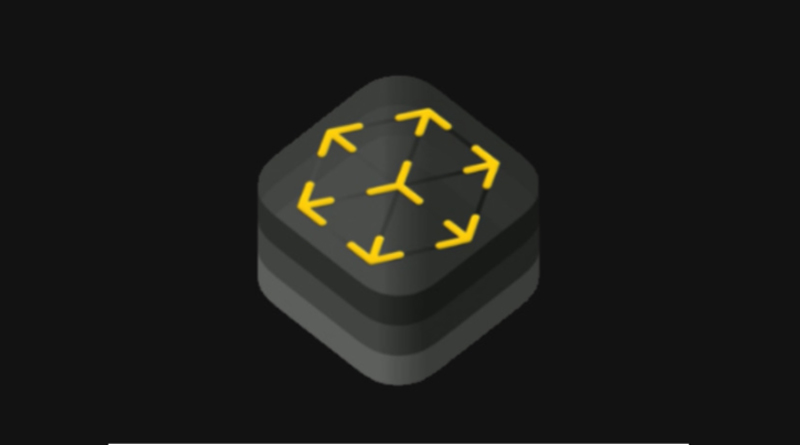ARKit
Presented in WWDC 2017, ARKit is Apple’s product advancement unit that empowers application designers to join increased reality into their applications. ARKit handles large numbers of the intense assignments related to AR, including recognizing development and the neighborhood climate, working on the cycle for designers to put virtual items in an ordinary scene.
- Face Tracking for iPhone X and forward
- Motion Capture, People Occlusion for devices with A12 Bionic chips
- Location based anchors
- Hyper-local location finding using 3D map data
- Tracks positions and movement
- Scene and horizontal plane detection
- Lighting estimation
- Works with third-party development tools
- Augmented reality framework
ARKit is right now on its third cycle and is alluded to by Apple as ARKit 3.
What is augmented reality?
Expanded reality – frequently adapted as AR – is the demonstration of superimposing a PC-created picture into “this present reality,” generally through a cell phone camera and the screen. Individuals regularly contrast AR with VR – or augmented reality. Augmented reality, in any case, is the demonstration of establishing a completely reenacted climate that a client can “venture into.”
Current instances of increased the truth are games like Pokemon Go, which has an AR mode that permits clients to chase, photo, and catch Pokemon through their cell phone’s camera. Web-based media stages, for example, Instagram and Snapchat utilize expanded reality channels to urge clients to share photos and recordings.
ARKit is additionally the system that controls the iOS application Measure.
A few retailers permit clients to see things in their homes by means of increased reality also.
Microsoft HoloLens and Magic Leap One are instances of two head-worn items today that utilization AR innovation. There has likewise been plentiful proof highlighting Apple fostering an AR headset or AR glasses.
ARKit Features
ARKit utilizes Visual Inertial Odometry (VIO) to precisely follow the world, joining camera sensor information with CoreMotion information.
Following contrasts in the image when the point of the iOS gadget changes. Joined with the developments distinguished inside the CoreMotion information, ARKit perceives the movement and survey point of the iOS gadget to the climate.
The framework additionally utilizes the camera sensor to assess the light of the climate. This information is valuable in applying lighting impacts to virtual articles, assisting with coordinating with this present reality scene intently, facilitating the fantasy that the virtual thing is really in reality.
ARKit can follow a client’s face by means of the iPhone TrueDepth camera. By making a face network dependent on information from the TrueDepth camera, it is feasible to add impacts to the client’s face continuously, for example, applying virtual cosmetics or different components for a selfie. The Animoji include additionally utilizes this framework.
Apple’s ARKit documentation remembers guides for how to assemble an engineer’s first AR experience, managing 3D communication and UI controls in AR, dealing with sound in AR, and making face-based AR encounters.
Apple has additionally added exercises in its Swift Playgrounds application, giving more youthful and unpracticed designers a prologue to the system.
While it has enhancements in Metal and SceneKit, it is likewise conceivable to join ARKit into outsider apparatuses.
Rumors
Holes from pre-delivered code propose that clients will actually want to discover gadgets utilizing AR and Find My. The U1 chip in new iPhones and iPods, or the forthcoming “AirTags”, will make discovering a gadget’s definite area a lot simpler. An organization called Dent Reality has collaborated with Apple and needs to plan every one of the public indoor spaces of the world with basic devices. The drive would permit designers to construct applications and web encounters utilizing Apple’s guide API and Dent Reality’s AR layer.
ARKit 4
iOS 14, which Apple delivered in September 2020, contains a few components that prepare for further developed AR encounters on new Apple equipment.
Area anchors will let designers and clients connect expanded reality objects to areas in reality. When utilizing AR on a gadget, clients will dish the camera around to track down a reasonable AR surface. While this occurs, the camera will utilize the encompassing design to assist with pinpointing definite geolocation.
This element will take into account more vivid AR encounters and give the application a superior comprehension of the climate for object situations and impediments.
Face and hand following have likewise been included ARKit 4. Which will take into consideration further developed AR games and channels that use body following.
LiDAR and ARKit 3.5
The fourth-age iPad Pro and iPhone 12 Pro series each remember a LiDAR sensor for the back of the gadget. Beginning with an update to ARKit for iOS 13.4, Apple’s product presently upholds the LiDAR framework and can exploit the most recent equipment.
With ARKit 3.5, designers will actually want to utilize another Scene Geometry API to make expanded reality encounters with object impediment and certifiable physical science for virtual articles. Scene Geometry will permit an ARKit application to establish a topological guide of a climate, opening new AR highlights and extra bits of knowledge and data for engineers.
The LiDAR will be utilized for 3D climate planning that will consider AR to be enormously improved. The scanner works from up to 5 meters away and gets results in a split second. Which makes AR applications a lot simpler to utilize and more precise.
Utilizing a LiDAR sensor will quickly expand AR planning times and the capacity to recognize items and individuals. This ought to likewise further develop representation mode and photography overall as 3D guides can be utilized with each picture.
ARKit 3
ARKit 3 brought a considerable amount of calibrating to the framework, utilizing AI and further developed 3D article location. Complex conditions are currently equipped for being all the more precisely followed for picture arrangement and estimation.
It likewise brought Motion Capture, enabling the gadget to comprehend body position, development, and then some. This empowers engineers to utilize movement and stances as contributions to an AR application.
ARKit 3 takes into account concurrent front and back camera following. Clients would now be able to associate with AR content from the back camera by utilizing looks and head situating.
Engineer Reaction and Initial Response
The engineer’s reaction to ARKit’s instruments is “inconceivable,” as per Apple VP of overall iPod, iPhone, and iOS item promoting Greg Joswiak in a late June 2019 meeting. Noticing immediately created projects going from virtual estimating tapes to an Ikea shopping application, Joswiak said. It’s totally mind-boggling what individuals are doing in so brief period.”
“I think there is a monstrous runway that we have here with the iPhone and the iPad. The reality we have a billion of these gadgets out there is a serious open door for designers,” said Joswiak. “Who knows the sort of things descending the street, yet whatever those things are, we will begin at nothing.”
ARKit Compatibility
ARKit was delivered close by iOS 11. Which implied any gadget fit for running iOS 11 would have the option to use AR highlights.
ARKit 4 actually has highlights that are viable with gadgets running iOS 11. The most recent components and profundity detecting require LiDAR on the gadget. Which is just the iPad Pro and iPhone 12 Pro series until further notice.
ARKit 4 and LiDAR will be vital going ahead as Apple proceeds with the advancement of “Apple Glass.”



